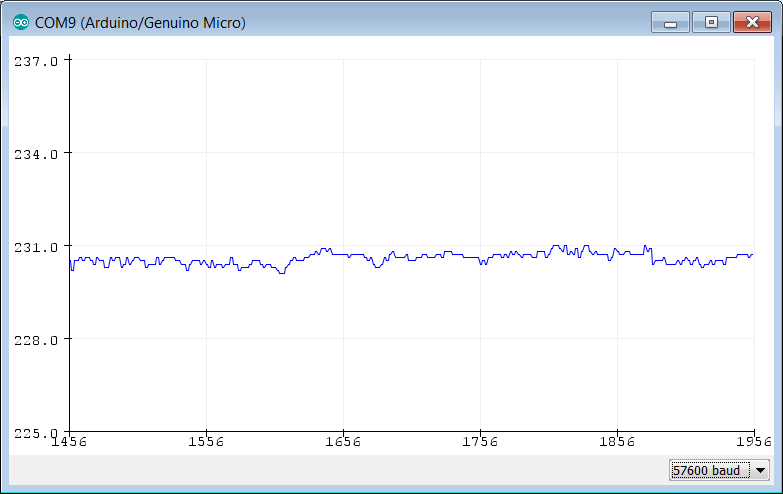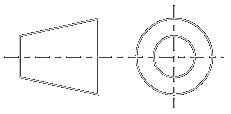Categories
Statistics
Since 08.08.2014
Counts only, if "DNT = disabled".
Your IP is 13.58.191.60
ec2-13-58-191-60.us-east-2.c
Counts only, if "DNT = disabled".
Your IP is 13.58.191.60
ec2-13-58-191-60.us-east-2.c
Info
เราจะทำแบบวิศวกรผู้ยิ่งใหญ่

25. December 2024
YOU RATED THIS ...
avg = 0.0 , n = 0


MERRY CHRISTMAS
Arduino-reads-UT803.php 9269 Bytes 09-06-2024 12:52:41
Arduino / Genuino and the UT803
Managing this serial stuff
We showed here, that this multimeter wants
power from an external source in order to be able to
send data. Now we present a working arduino sketch to read and understand the sent data ...
✈ Arduino Sketch - The Code
Double click on code to select ...
/* /////////////////////////////////////////////////////////////
ARDUINO/Genuino (UNO) Test/Demo Sketch for UT803 Multimeter
https://www.changpuak.ch/electronics/Arduino-reads-UT803.php
Software Version 1.0,
22.03.2017, Alexander C. Frank
//////////////////////////////////////////////////////////////*/
#include <SoftwareSerial.h>
unsigned int i = 0;
unsigned long data ;
char MValue[12] ;
float Number = 0.0 ;
float OldNumber = 0.0 ;
String Text = "";
String Unit = "";
unsigned int Resolution = 1;
SoftwareSerial mySerial(10, 11); // RX, TX (unused)
void setup()
{
// Open serial communications and wait for port to open:
Serial.begin(57600);
// set the data rate for the SoftwareSerial port
mySerial.begin(19200);
}
void loop()
{
if (mySerial.available())
{
data = 0x7F & mySerial.read();
MValue[i] = data ;
i += 1;
if (data == 0x0A)
{
i = 0 ;
Number = ( MValue[1] - 0x30 ) * 1000 ;
Number += ( MValue[2] - 0x30 ) * 100 ;
Number += ( MValue[3] - 0x30 ) * 10 ;
Number += ( MValue[4] - 0x30 ) ;
if (MValue[0] == 0x31 ) Number = Number * 10 ;
if (MValue[0] == 0x32 ) Number = Number * 100 ;
if (MValue[0] == 0x33 ) Number = Number * 1000 ;
if (MValue[0] == 0x34 ) Number = Number * 10000 ;
if (MValue[0] == 0x35 ) Number = Number * 100000 ;
Unit = String(MValue[5]) + String(MValue[6])
+String(MValue[7]) +String(MValue[8]);
// VOLTAGE DC POSITIVE
if ( Unit == ";80:" )
{
Text = "Volt DC" ;
Number = Number * 0.001;
Resolution = ( MValue[0] - 0x30 ) + 1;
}
// VOLTAGE AC
if ( Unit == ";806" )
{
Text = "Volt AC" ;
Number = Number * 0.001;
Resolution = ( MValue[0] - 0x30 ) + 0;
}
// OHMS
if ( Unit == "3802" )
{
Text = "Ohm" ;
Number = Number * 0.1;
Resolution = ( MValue[0] - 0x30 ) + 1;
}
// OUTPUT ONLY IF REASONABLE VALUE
if ((Number > 0.95 * OldNumber) && (Number < 1.05 * OldNumber))
{
Serial.print(Number,Resolution);
Serial.print(" ");
Serial.print(Text);
/* Serial.print("\t\t");
for (int j=0; j<10; j++)
{
Serial.print(char(MValue[j]));
}
*/
Serial.println(" ");
}
OldNumber = Number ;
}
}
}
// /////////////////////////////////////////////////////////////
// END OF FILE.
// /////////////////////////////////////////////////////////////
✈ The Bits / Bytes in detail
The UT803 uses only seven bits. That's why we masked out the 8th (MSB) in line 33.
Sometimes (when you look away) the UT803 sends garbage, or the arduino receives garbage. For that rare case we introduced some kind of check in line 77.
Under normal circumstances, there are eleven bytes sent. This may look like this :
0x30, 0x30,0x30,0x30,0x30, 0x3B,0x3C,0x30,0x3A, 0x0D,0x0A
The very first byte is a "multiplier". Multiply the following numeric value with ten to the power of this number. (e.g. 10^0 = 1, 10^1 = 10, 10^2 = 100, ...)
Bytes 1,2,3 and 4 represent the numeric value. This is a four digit number between 0000 and 5999. The decimal point is defined by the following "unit" and the multiplier (Byte 0).
Bytes 5,6,7 and 8 represent the unit. We did not test all of them, but will give some examples here. ;80: is Volts DC, ;806 is Volts AC, 3802 is Ohm, 4800 is Degrees Celsius, 9808 is Ampere DC, 6802 is Nanofarad. Feel free to explore the others by yourselves ...
The very last two bytes are always 0x0D and 0x0A. They are "Carriage Return" and "Line Feed". This will end the transmission.
Sometimes (when you look away) the UT803 sends garbage, or the arduino receives garbage. For that rare case we introduced some kind of check in line 77.
Under normal circumstances, there are eleven bytes sent. This may look like this :
0x30, 0x30,0x30,0x30,0x30, 0x3B,0x3C,0x30,0x3A, 0x0D,0x0A
The very first byte is a "multiplier". Multiply the following numeric value with ten to the power of this number. (e.g. 10^0 = 1, 10^1 = 10, 10^2 = 100, ...)
Bytes 1,2,3 and 4 represent the numeric value. This is a four digit number between 0000 and 5999. The decimal point is defined by the following "unit" and the multiplier (Byte 0).
Bytes 5,6,7 and 8 represent the unit. We did not test all of them, but will give some examples here. ;80: is Volts DC, ;806 is Volts AC, 3802 is Ohm, 4800 is Degrees Celsius, 9808 is Ampere DC, 6802 is Nanofarad. Feel free to explore the others by yourselves ...
The very last two bytes are always 0x0D and 0x0A. They are "Carriage Return" and "Line Feed". This will end the transmission.
✈ The Serial Plotter
Is a beautiful tool to get an impression on the dynamics of your data . Using the example above you may get a graph like this :

Monitoring the power grid voltage ...
✈ Share your thoughts
The webmaster does not read these comments regularely. Urgent questions should be send via email.
Ads or links to completely uncorrelated things will be removed.
Your Browser says that you allow tracking. Mayst we suggest that you check that DNT thing ?
 ช้างเผือก
ช้างเผือก
